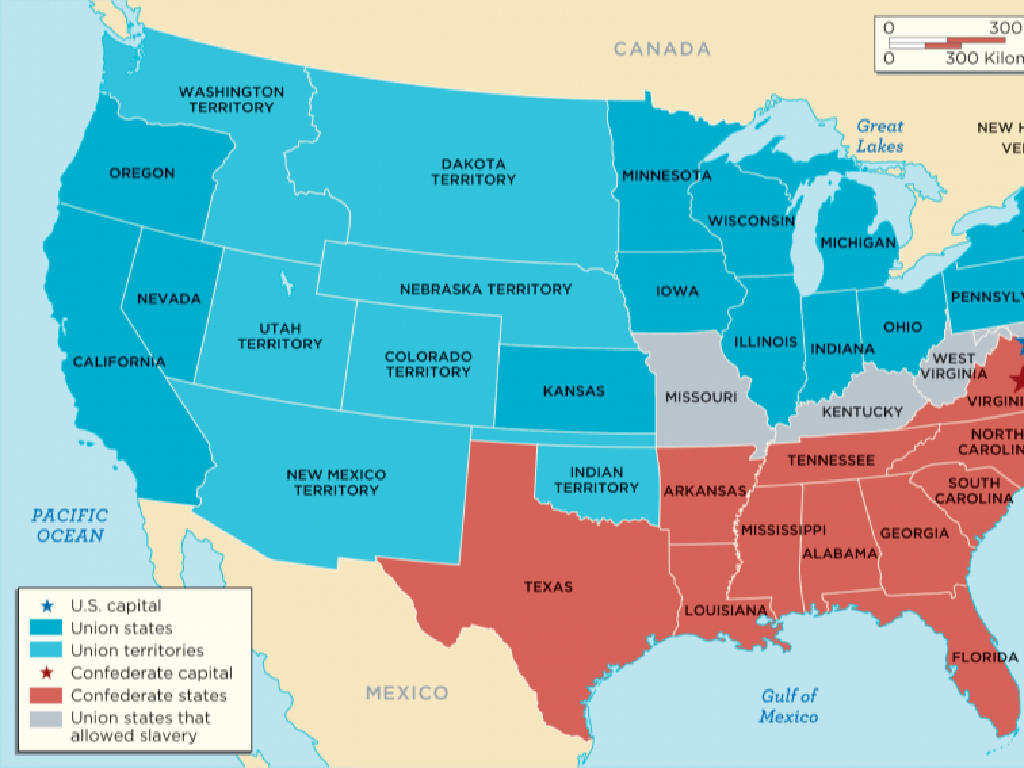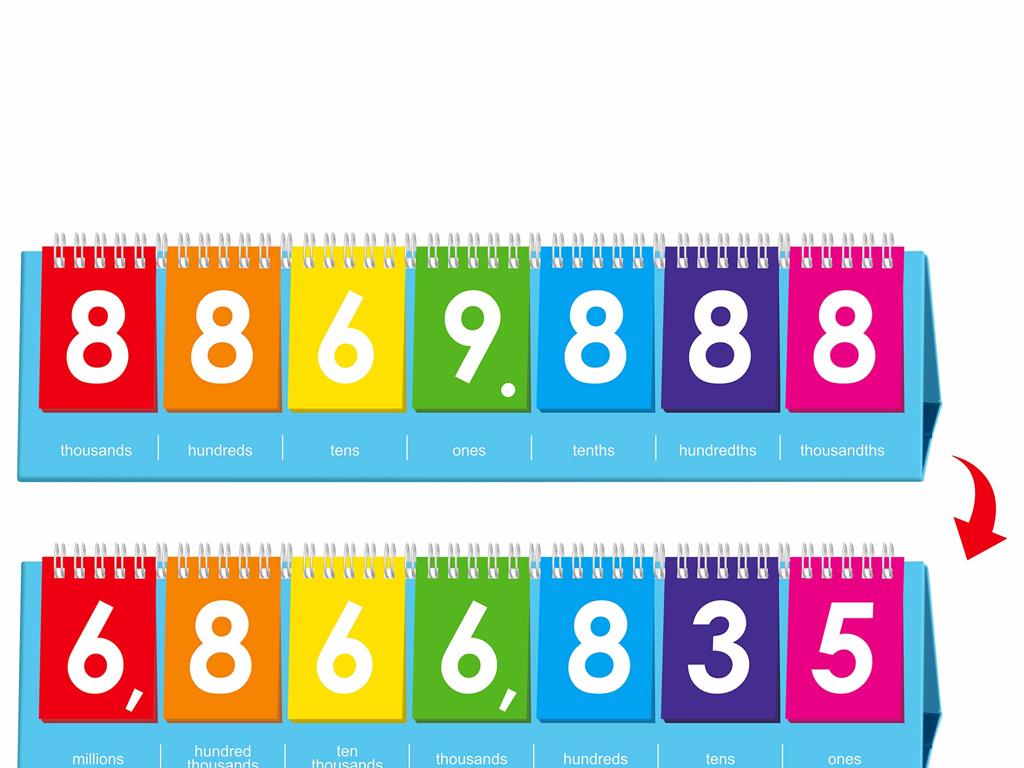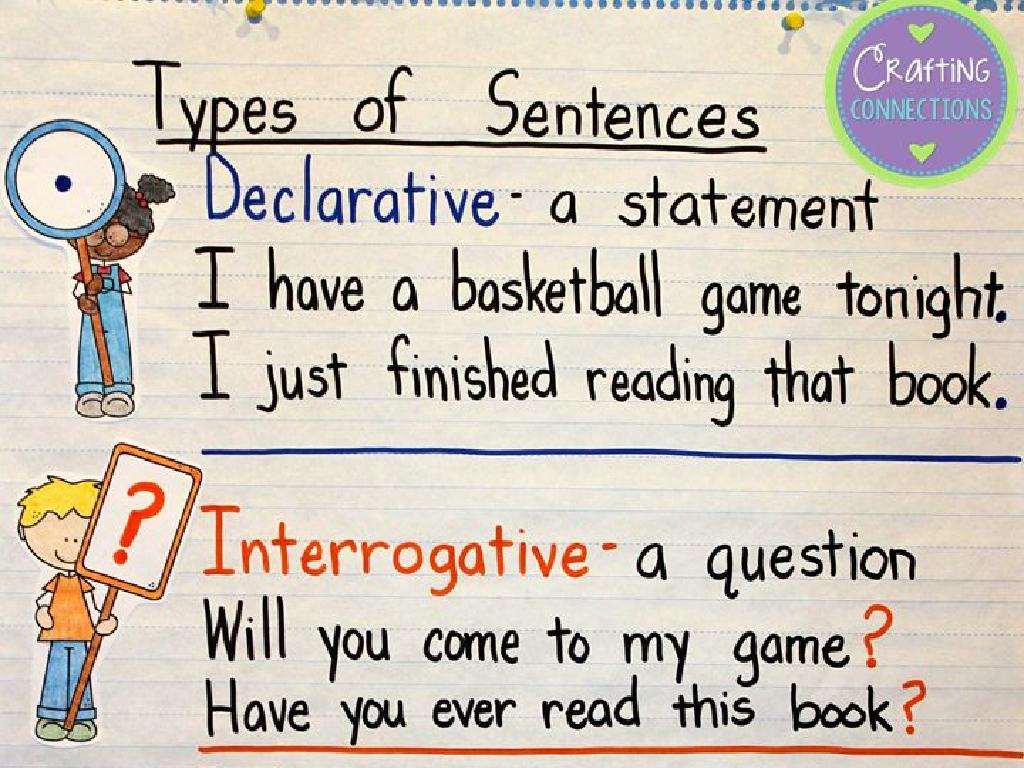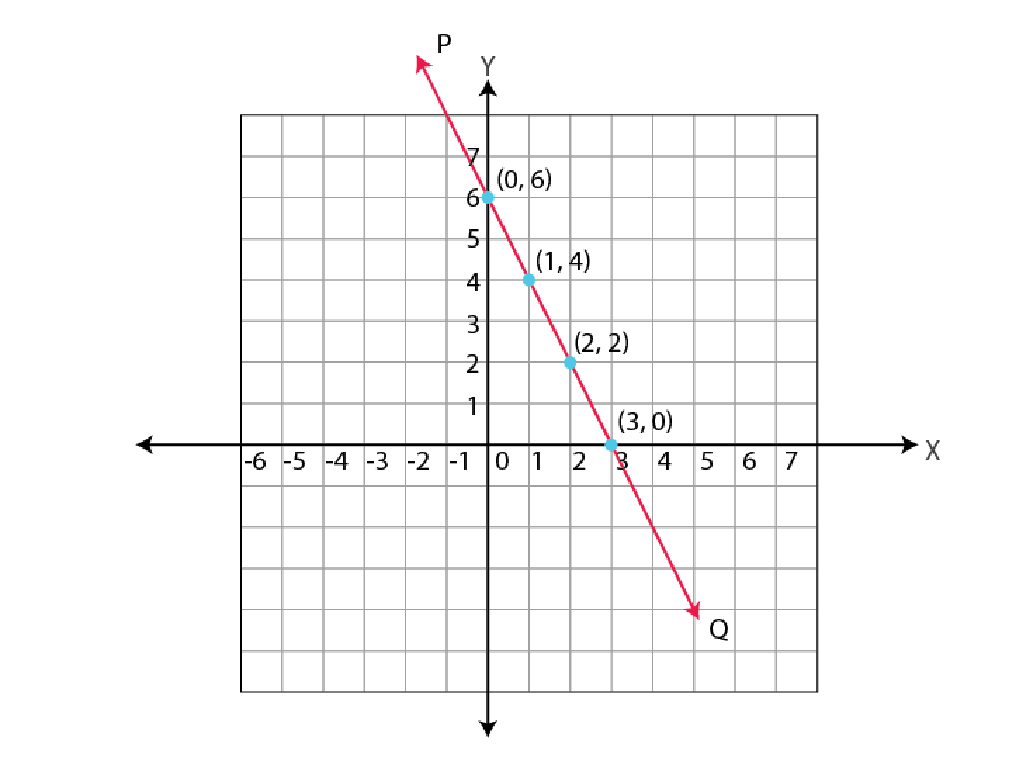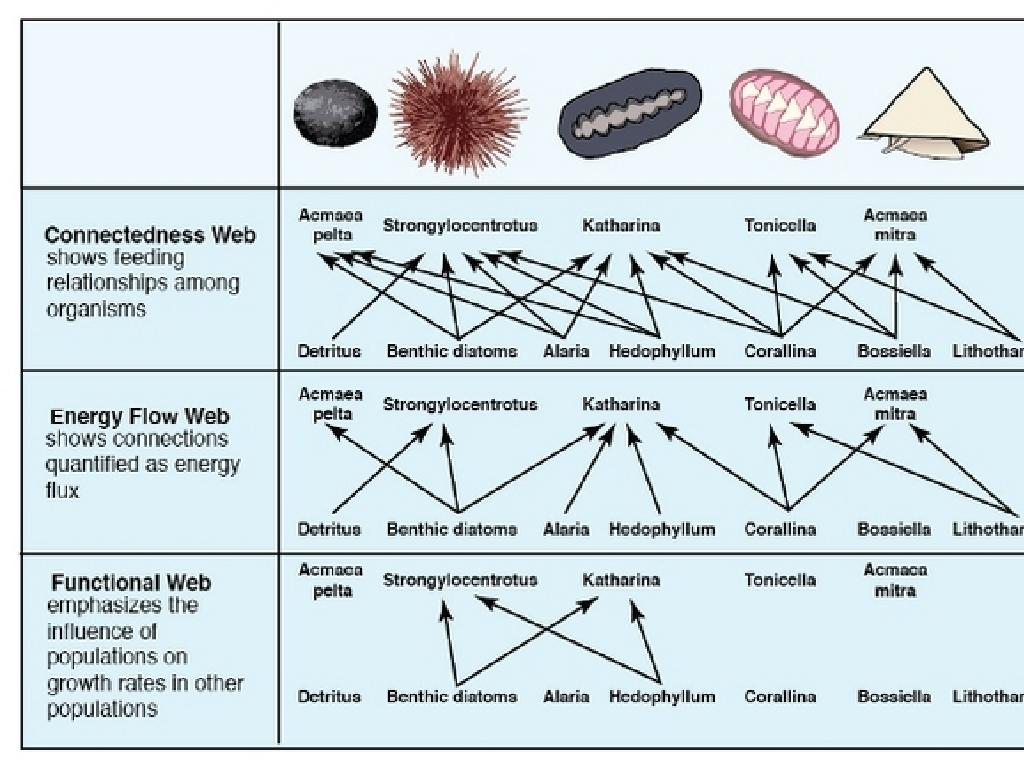Complete The Sentence With The Correct Sight Word
Subject: Language arts
Grade: Second grade
Topic: Sight Words
Please LOG IN to download the presentation. Access is available to registered users only.
View More Content
Today’s Adventure: Completing Sentences with Sight Words!
– Discover what sight words are
Words we often see in texts and should instantly recognize.
– Understand why sight words are key
They help us read faster and understand better.
– Practice completing sentences
Use sight words to fill in blanks in sentences.
– Boost reading fluency
|
This slide introduces the concept of sight words to second graders, emphasizing their importance in reading fluency. Sight words are common words that appear frequently in text and may not follow standard phonetic rules, thus they should be memorized. Understanding sight words enables students to read more smoothly and quickly, which is crucial for their reading development. During the lesson, engage students with activities where they practice using sight words to complete sentences, enhancing their ability to recognize these words instantly. This will not only improve their reading skills but also their writing abilities as they become more familiar with these common words.
Meet the Sight Words
– Review common sight words
– Examples: ‘the’, ‘and’, ‘you’
– Words we often see in books and use frequently
– Practice spotting sight words
– Find sight words in a sentence or story
– Use sight words in sentences
– Try writing a sentence using a sight word
|
This slide is aimed at helping second-grade students recognize and use common sight words, which are words that appear frequently in text and can often be recognized by sight rather than sounded out. Start by reviewing the sight words the class has learned so far. Provide clear examples of sight words such as ‘the’, ‘and’, ‘you’, ‘that’, ‘it’, and explain how they fit into sentences. Engage the students with an interactive activity where they spot sight words in sentences or stories provided by the teacher. Finally, encourage them to use sight words correctly by writing their own sentences. This practice will enhance their reading fluency and comprehension skills.
Using Sight Words in Sentences
– Choosing the right sight word
– Use clues in the sentence to find the correct word
– Understanding sentence context
– The words around the blank tell us what word fits
– Example: Fill in the blank
– ‘I like to play with my ___.’ What word completes the sentence?
|
This slide is aimed at helping second-grade students understand how to use sight words to complete sentences. Start by explaining that sight words are common words they need to recognize on sight. Teach them to use context clues, which means looking at the other words in the sentence to help decide which sight word fits best. For example, in the sentence ‘I like to play with my ___,’ the blank should be filled with something you can play with, which is ‘dog’ in this case. ‘Is’ and ‘run’ don’t make sense here. Encourage students to practice with different sentences and sight words to become more comfortable with this skill.
Let’s Practice Sight Words Together!
– Interactive fill-in-the-blank activity
– Read sentences aloud as a class
– Suggest sight words for blanks
– Think: Which sight word makes sense here?
– Group discussion on choices
– Why did you choose that word?
|
This slide introduces an interactive class activity focused on practicing sight words through fill-in-the-blank sentences. The teacher will display sentences with missing words on the board, and the class will read them aloud together. Students will then be encouraged to suggest which sight words best complete the sentences. After a student suggests a word, the class can discuss why that word fits in the context of the sentence. This activity helps students understand the usage of sight words in sentences and reinforces their vocabulary. Teachers should prepare a list of sentences with blanks and a separate list of sight words that can be used to fill those blanks. Encourage participation from all students and provide positive feedback to build confidence.
Game Time: Sight Word Bingo!
– Receive your Bingo card
– Listen as the teacher reads sentences
– Sentences will have a blank for the sight word
– Find the missing sight word
– Think: which sight word fits?
– Mark the word on your Bingo card
– Get ready to shout ‘Bingo!’ when you complete a row
|
This interactive game is designed to help students recognize and learn sight words in a fun and engaging way. Distribute the Sight Word Bingo cards to each student, ensuring that each card has a different arrangement of sight words. Read out sentences with a missing word, pausing where the sight word should be. Students will listen carefully and mark the correct sight word on their Bingo cards. The first student to complete a row, column, or diagonal and shout ‘Bingo!’ wins. Prepare a small prize or recognition for the winners. This activity reinforces word recognition, listening skills, and quick thinking. It’s also a great way for students to practice sight words in context.
Create Your Own Sentence with Sight Words
– Pick a sight word for your sentence
– Craft your own unique sentence
– Use the sight word in a way that makes sense
– Present your sentence to the class
– Vote for the most creative sentences
– Everyone gets to choose their favorite
|
This slide introduces an interactive class activity focused on sight words. Students are encouraged to select a sight word and use it to construct a sentence of their own. This exercise aims to enhance their understanding of sight words and their ability to use them in context. After creating their sentences, students will share them with the class, providing an opportunity for public speaking and peer learning. The class will then engage in a voting process to select the most creative sentences, adding an element of fun and competition to the learning process. Teachers should prepare a list of sight words appropriate for the second grade and guide students in sentence construction, ensuring they understand the meaning and usage of each sight word.
Class Activity: Sight Word Hunt
– Search for sight words around the room
– Pair up and write sentences
– Work together to think of creative sentences
– Use the sight words in your sentences
– Make sure the sight words are used correctly
– Present sentences to the class
|
This interactive activity is designed to help students recognize and use sight words in context. By searching the classroom for sight words, students will engage in a physical and fun learning experience. Working in pairs encourages collaboration and allows students to discuss and decide on the best way to use each word in a sentence. This peer interaction also promotes social learning and accountability. When presenting their sentences, students will practice public speaking and gain confidence in their language abilities. For the teacher: Prepare a list of sight words and place them around the classroom before the activity. Monitor the pairs for assistance and ensure each student participates in the presentation. Possible variations of the activity could include a sight word scavenger hunt, creating a story with the found words, or drawing pictures to illustrate their sentences.
Wrapping Up: Sight Words Mastery
– Recap of today’s sight words
– Importance of sight words
– Sight words help in reading faster and better.
– Practice sight words daily
– Try to read a few pages from a book every day.
– Get ready for next lesson
|
As we conclude today’s lesson, it’s important to review the sight words we’ve learned. Understanding sight words is crucial because they are common words that appear frequently in text and can’t always be sounded out using phonics. By recognizing these words on sight, students can read more smoothly and with better comprehension. Encourage students to practice reading at home, perhaps with a family member, to reinforce their learning. Remind them that regular practice can make a big difference in their reading skills. For the next lesson, students should be prepared to recognize and use new sight words, building on what they’ve learned today.

